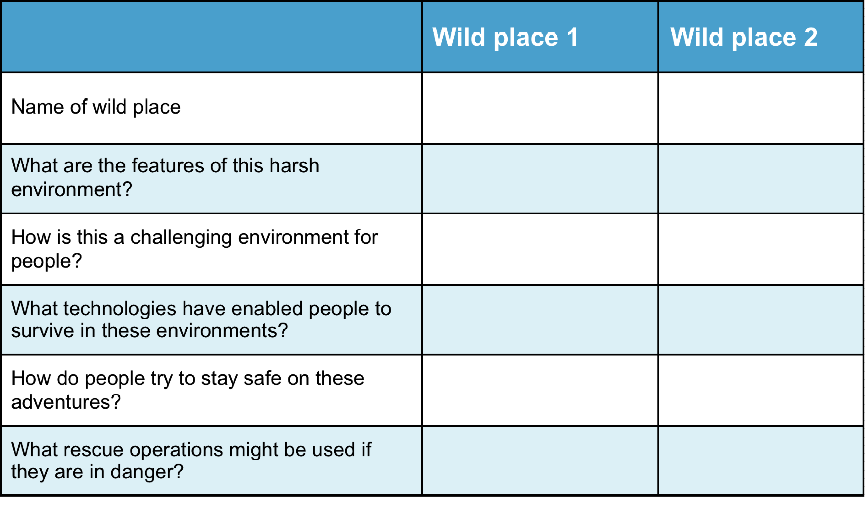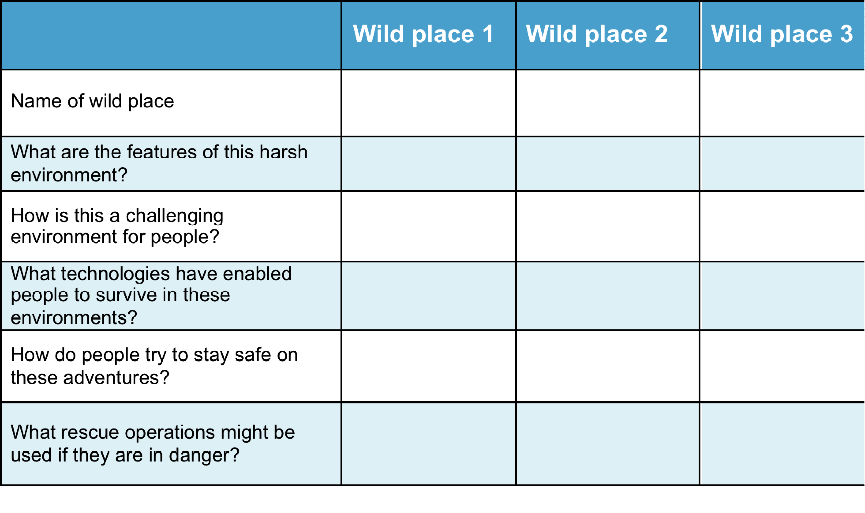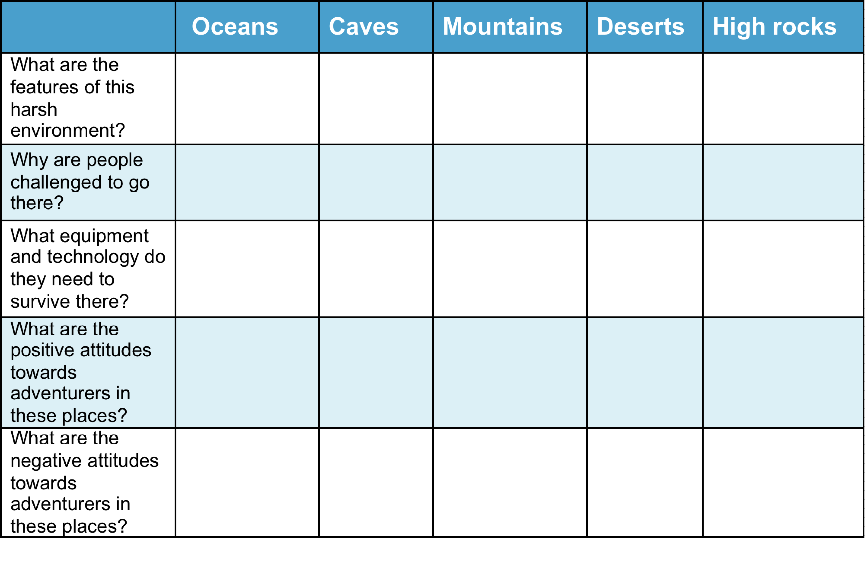Information for Teachers
Curriculum links
Australian Science Standards
GS (ACHASSK088) The importance of environments, including natural vegetation, to animals and people
DT (ACTDEK013) Suitability of materials, systems, components, tools and equipment for particular purposes
UIS (ACSHE062) People such as clothing designers, builders or engineers use science to select appropriate materials for their work
New Zealand Science Achievement Objectives
NTTK: Materials are selected based on desired performance criteria
Helpful websites
You may want to direct your students to websites to help with their investigations.
Students may want to learn more about one type of adventure. They can do a search for the name of the adventure (e.g. underwater)+adventure. They can search each adventure topic this way.
Or they may want to learn more about hazards in a particular wild place. If so, they can search place (e.g. desert)+hazards.
Other search topics could be rescues+wild places
How to search the internet
1 Keep your request short
Fewer words will give a more accurate search.
2 Choose exactly what you want
For example: Arctic Circle Climate
3 Use quotes
Double quotes around a set of words tell the search engine to consider those exact words in that exact order without any change. For example: “Arctic Circle Climate”
4 Use the plus sign (+)
If you add a plus sign (+) between words, the internet will search for all the words. For example: migrate+birds+whales+mammal
5 Use the minus sign (–) to say what you don’t want
Use a minus sign (–) to show words you do not want to appear in your results. For example: if you search for burrowing animals and do not want mammals in your search, –mammals will exclude mammals. Note that you need to put a space before the minus sign for the word to be excluded.
6 Be very clear about what you don’t want
Part 1
Ask questions and make predictions
After reading Adventures In Wild Places, you may have many questions about how wild places are defined and the challenges they present to humans.
List your questions.
- Compare your list with questions that others have.
- Choose a question you would like to investigate.
- You can work alone, with a partner, or in a small group.
You may want to choose one or more of these questions to investigate
Q1. Why are places considered to be wild?
Q2. How do harsh environments restrict people’s ability to use them long term?
Q3. What technologies have enabled people to survive in these environments?
Go to Part 2 Plan and investigate →Part 2
Plan and investigate
Do searches in the internet or in books or talk to people who can help to find the information you are looking for.
Your teacher may suggest suitable websites for further information.
Go to Part 3 Record and analyse data →Part 3
Record and analyse data
Find a way of recording your information that will allow you to see any patterns in the data.
Data Chart for Adventures In Wild Places
(Download and change to suit your information)
 Download Chart
Download Chart
Go to Part 4 Evaluate the information →
Part 4
Evaluate the information
1. Look over the information you have gathered and the patterns you have found.
In what ways do harsh environments restrict people’s ability to use them long term?
What technologies have enabled people to survive in these environments?
2. Search for other patterns.
How do people try to stay safe on these adventures?
3. Makes notes about what you find.
Go to Part 5 Communicate and share ideas →Part 5
Communicate and share ideas
Look over all of the information that you have gathered in your investigation.
What are the most important ideas about Adventures in Wild Places?
Make a chart showing the most important ideas.
 Download Chart
Download Chart
 Download Chart
Download Chart
← Return to menu
